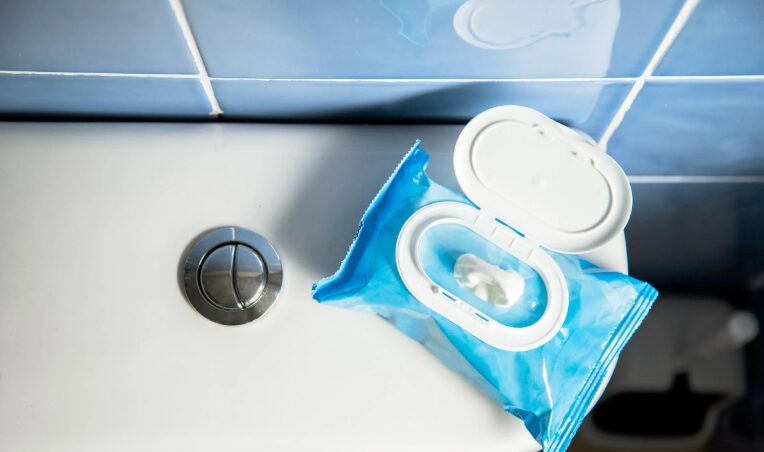
Flushable wipes have become a popular alternative to toilet paper, offering a supposedly more effective and refreshing clean. Marketed as a convenient, sanitary option, these wipes are often labeled as “flushable,” implying they break down easily in water like toilet paper. But do they really? The answer is more complicated than the packaging suggests.
What Are Flushable Wipes?
Flushable wipes are pre-moistened disposable cloths made from a combination of synthetic and natural fibers. They are often infused with cleansing agents, moisturizers, and sometimes antibacterial ingredients. Unlike traditional toilet paper, which is designed to break apart rapidly in water, these wipes contain stronger fibers that make them more durable when wet.
The Breakdown Problem
One of the biggest concerns with so-called flushable wipes is their ability to disintegrate in water. Toilet paper begins breaking down almost immediately after flushing, but flushable wipes remain intact for much longer. Numerous studies and wastewater treatment facility reports indicate that even wipes labeled as “flushable” do not disintegrate as quickly or completely as toilet paper.
In fact, these tests conducted by various consumer advocacy groups and sewer system experts, many brands of flushable wipes remained mostly intact after being submerged in water for hours or even days. This poses a significant problem for household plumbing and municipal wastewater systems.
The Impact on Plumbing and Sewer Systems
The durability of flushable wipes makes them a major contributor to clogs in residential and municipal plumbing systems. Homeowners frequently encounter blocked pipes due to wipes accumulating in bends and joints. This can lead to expensive plumbing repairs, sometimes requiring professional intervention to clear out the obstruction.
On a larger scale, city sewer systems have faced an increasing number of blockages due to flushable wipes. Water treatment facilities often struggle with massive buildups of wipes, sometimes merging with grease and other debris to form “fatbergs” – solidified masses of non-decomposable materials. These obstructions can cost municipalities millions of dollars annually in maintenance and repairs.
What Do Water Treatment Experts Say?
Many wastewater treatment professionals firmly oppose the flushing of wipes, even those labeled as flushable. Organizations such as the National Association of Clean Water Agencies (NACWA) and the Enviromental Protection Agency (EPA) have warned about the risks of flushing these products, urging consumers to dispose of them in the trash instead.
In response, some cities have enacted legislation to regulate the labeling of flushable wipes, requiring manufacturers to provide clear evidence that their products meet industry-disintegration standards. Some places, like the UK and Canada, have even considered banning the term “flushable” on wipe packaging unless stringent testing proves they break down as effectively as toilet paper.
Are There Truly Flushable Alternatives?
While many wipes are marketed as flushable, only a small handful of products have been tested and approved by independent organizations for safe flushing. If you prefer using wipes, consider:
Bidets: A bidet can be an eco-friendly and effective alternative, reducing the need for wipes altogether.
Trash disposal: The safest way to dispose of any wipes is to throw it in the trash instead of flushing it down the toilet.
The Bottom Line
Despite Marketing claims, flushable wipes do not break down as efficiently as toilet paper and can cause serious plumbing and environmental issues. The safest approach is to avoid flushing them altogether and instead seek alternative solutions for personal hygiene. If you must use wipes, dispose of them properly in the trash to prevent costly repairs and environmental damage.
Next time you see “flushable” on a package, think twice before flushing-it may save you and your city a lot of trouble in the long run.

Leave a Reply